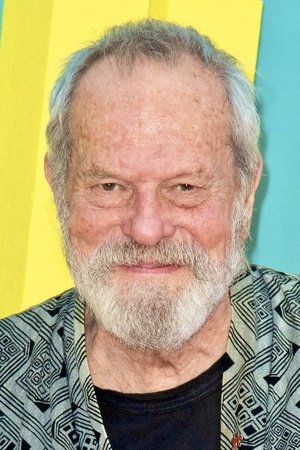In the sprawling landscape of cinema, few directors have a footprint as unique and unmistakable as Terry Gilliam. He is a true original—a madcap cartoonist, a fever-dream storyteller, and a relentless champion of the individual against the cold, crushing gears of bureaucracy. To watch a Gilliam film is to step into a world that is at once breathtakingly beautiful, grotesquely funny, and profoundly human.
For American audiences, Gilliam is often the "other" Python—the lone Yankee in the legendary British comedy troupe Monty Python, responsible for their surreal, cut-out animation sequences. But his filmography stands as a monumental achievement in its own right, a decades-long crusade to put his wildest imaginations on screen, no matter the cost.
What defines a Terry Gilliam movie? You know it the moment you see it.
The "Fish-Eye" Lens: Gilliam loves wide-angle and fish-eye lenses that distort the world, making spaces feel cavernous, faces comically exaggerated, and realities unstable.
The Baroquely Cluttered Frame: His sets are rarely minimalist. They are packed to the brim with intricate details, grime, gadgets, and visual gags, inviting you to pause and explore every corner of the screen.
The Heroic Dreamer: His protagonists are almost always dreamers, fools, or naive idealists battling impossible, oppressive systems. They are the last bastion of imagination in a world obsessed with order.
Darkness and Whimsy: A Gilliam film can make you laugh uproariously one minute and shudder with existential dread the next. He masterfully blends fantasy, satire, and dark humor.
Diving into Gilliam's work can be daunting. Here’s a roadmap to his incredible, and often tumultuous, career.
The Formative Fantasies (1980s)
Time Bandits (1981): A perfect entry point. This kid-friendly(ish) adventure follows a young boy traveling through history with a band of dwarf thieves. It’s a riotous, darkly funny tale that establishes all of Gilliam's core themes: imagination vs. reality, and the dullness of the modern world.
Brazil (1985): Often considered his masterpiece. This dystopian satire is a "1984" for the ADHD set—a hilarious and horrifying vision of a future strangled by paperwork and ductwork. It’s a stunning, complete realization of his artistic vision and a brutal fight against the system (both in the film and in his famous battle with the studio to release his cut).
The Adventures of Baron Munchausen (1988): The final chapter in his "Trilogy of Imagination," this is epic, lavish, and famously troubled production. It’s a testament to the cost of his ambition, but also to the glorious, impossible beauty he can achieve.
The Hollywood(ish) Years (1990s)
The Fisher King (1991): Perhaps his most accessible and heartfelt film. Set in a magical-realist New York City, it features stunning performances from Robin Williams and Jeff Bridges. It proves that beneath the visual chaos, Gilliam is a profound humanist.
12 Monkeys (1995): A brilliant, mind-bending sci-fi thriller that brought him his widest commercial success. Bruce Willis and a truly unhinged Brad Pitt star in this twisty tale of time travel, madness, and apocalypse. It’s Gilliam at his most structurally clever and visually gripping.
The Later Journeys (2000s - Present)
Fear and Loathing in Las Vegas (1998): A perfect marriage of director and material. Gilliam plunges us headfirst into the drug-fueled, paranoid nightmare of Hunter S. Thompson’s classic novel. It’s a chaotic, sensory assault that is as brilliant as it is nauseating.
The Imaginarium of Doctor Parnassus (2009): Infamously the film Heath Ledger was acting in when he died. The fact that Gilliam managed to complete it—by having Johnny Depp, Jude Law, and Colin Farrell play transformations of Ledger's character—is a testament to his resilience and creative problem-solving.
The Zero Theorem (2013): A return to the dystopian sci-fi of Brazil, this film explores existential loneliness in a hyper-connected, corporate-controlled world. It’s a challenging, visually dense film for the digital age.
You can’t talk about Terry Gilliam without talking about his notorious battles. He is famously "cursed." His sets are plagued by disasters: funding falls through, stars get injured, weather turns biblical (the set of The Man Who Killed Don Quixote was literally washed away). His long, painful, and ultimately successful 30-year quest to make The Man Who Killed Don Quixote is the stuff of Hollywood legend, documented in the heartbreaking film Lost in La Mancha.
But this isn't just bad luck. It’s the direct result of his uncompromising vision. He is a dreamer fighting the very real bureaucracy of the film industry, living out the very struggles his characters face on screen.
Terry Gilliam is not a director for everyone. His films are messy, chaotic, and often unresolved. But for those who connect with his work, the experience is unparalleled. He is a true auteur who has spent his career arguing for the power of dreams, the importance of folly, and the dangerous beauty of a mind left to its own devices.
In a world that often feels like it’s being designed by algorithm, we need Terry Gilliam’s gloriously imperfect, hand-crafted, and wildly imaginative chaos more than ever.
Where to Start?
Newcomer: Begin with The Fisher King or Time Bandits.
Ready for the Masterpiece: Dive headfirst into Brazil.
Python Fan wanting more: Check out The Adventures of Baron Munchausen or The Imaginarium of Doctor Parnassus.

© 2019-2025 flicksium Inc. | All Rights Reserved.